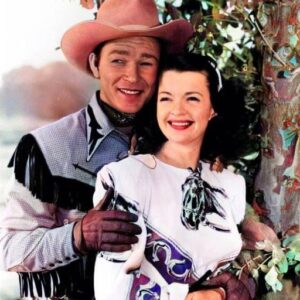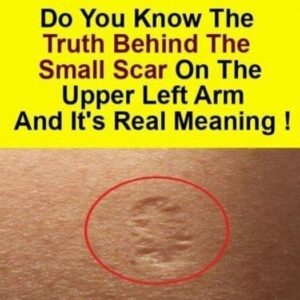Why Were Olympic Athletes & Other Celebs Spotted with Dark Red Circles on Their Bodies?There have been competitors with dark red circles under their skin at the Olympic Games over the years. Many have questioned the origin and significance of these marks, which are frequently found on the shoulders and backs of elite players. The tale of these peculiar imperfections demonstrates an intriguing fusion of traditional training methods and contemporary sports recuperation.

On July 27, 2024, the Paris 2024 Games got underway with a grand opening ceremony that took place by the Seine River. When the competition got underway, about 6,800 competitors from 205 different teams boarded different boats.Those who have watched the Olympic Games throughout the years might have observed a strange quality in a few of the participants. Their bodies are typically covered in large, dark red circular marks, which piques the interest and fuels speculation in both admirers and observers. Athletes and some celebrities have started to frequently display these characteristic marks, which are frequently visible on the shoulders, back, and other muscular areas. However, what is the background behind these peculiar markings? Wang Quan Wang Qun was shown near the pool, her body glowing with water, as she prepared for the 2008 Beijing Olympics. She wore a sleek swimsuit with a crisscross pattern on the back that showed off big red circles on her skin.

Her hair was safely covered with a swim cap, and she wore swimming goggles. With one hand securely resting on her waist, she prepared herself for her second dive into the sea. The Michael Phelps In this photo from the Rio 2016 Olympic Games, Michael Phelps is shown celebrating earning the gold in the men’s 4 x 200m freestyle relay. He had prominent round red patches on each sides of his big shoulders.Phelps’ arms, shoulders, and abs were all clearly visible in a different photo taken at the same event as he was celebrating winning the men’s 200-meter butterfly. It was also his 20th gold medal at the Olympics. The most decorated Olympian in history grinned at the cameras as he walked out of the water, his wet skin contrasting with the red rings.

During the swimming competition, Phelps was also able to see the recognizable red circles as he got ready to compete in a Men’s 100m Butterfly heat. He joined his hands and stood tall, self-assured, and prepared.Huge red circles stretched across Michael Phelps’s back, as seen in an unusual aerial photo. He was getting ready to participate in the Men’s 200m Individual Medley Semifinal when the photo was shot. Phelps’s back muscles were clearly marked by red spots in another adorable photo. He was enjoying his victory with Conor Dwyer in the Men’s 4 × 200m Freestyle Relay Final.

A detailed shot of Phelps’ lower body could mislead someone to believe that the noticeable red spots are bruises on his skin. He took one of these pictures while competing in the men’s 200-meter butterfly heat.He was pictured again after winning the Men’s 4 × 200m Freestyle Relay Final, embracing with Conor Dwyer, Townley Hass, and Ryan Lochte. One more picture showed Phelps’s muscular torso with the eye-catching red discs. During the last leg of the 4×100-meter freestyle relay, he was seen supporting his colleague with a determined expression on his face. Naddour, AlexanderAt the Rio 2016 Olympic Games, American gymnast Alexander Naddour was another competitor with a noticeable, sizable red circle mark. When he got ready to participate on the pommel horse during the qualifying round for the Artistic Gymnastics Men’s Team, the mark was clearly visible on his right arm.

Meilutyte Ruta Ruta Meilutyte, an Olympian swimmer, was competing in the women’s 100-meter breaststroke semifinal at the Rio 2016 Olympics when she also had a noticeable red circle on her right arm.

Meilutyte’s mark reappeared at a low point when she looked defeated during the Women’s 100m Breaststroke Final. Other Watercraft At the Tokyo 2020 Olympic Games, the visible dark red rings on other swimmers’ backs were remarkably consistent. For example, a male swimmer’s back torso had four symmetrical circles on each side, which made for a visually appealing pattern.

Over fourteen red discs were striking over the muscles in the back of another swimmer. Stretching from her back to her arms and shoulders, the discs were set in a neat, linear pattern. Jennifer Anniston In addition to athletes, celebrities with heavy red circles under their eyes like Jennifer Aniston have also been spotted with them. At the Los Angeles premiere of “Call Me Crazy” in 2013, Aniston was spotted with these marks.

Her upper back marks were visible because she was wearing a strapless playsuit. Jennifer appeared to have tried applying foundation to them, but the hue was too pale and showed through the paparazzi’s flashes. Paltrow, Gwyneth Fans were drawn to the striking red rings during the Olympics, but Gwyneth Paltrow had been seen wearing them for almost 20 years prior.The movie star wore the same characteristic dark red marks on her back as the Olympic athletes did during the 2004 “Anchorman” premiere. The pictures at the time triggered a global media frenzy, with articles about the procedure that left Paltrow with the odd markings on her back appearing in journals all over the world.

The Treatment Known as CuppingThe treatment known as cupping is the cause of the peculiar round, dark red markings. The round marks left by this procedure can be mistaken for bruising. The method has been used for at least 2000 years to treat pain, respiratory problems, and muscle stiffness. Its origins are in ancient Chinese medicine. In order to provide suction in customized cups that are applied to the body, heat or air are used in this therapy. The skin and blood vessels are drawn toward the cup by the vacuum, which frequently leaves skin markings.

It is thought that this procedure improves circulation, relaxes the muscles and joints, and draws blood to the area. Additionally, cupping may have anti-inflammatory properties. Cupping has anti-inflammatory properties because it improves targeted circulation, aids in the elimination of potentially inflammatory substances, and stimulates the flow of new blood. For roughly ten minutes, the cups can either stay in their original locations or, for the more daring, be moved around occasionally. They leave behind the characteristic welts after removal.Pro athletes all over the world support cupping, citing it as the method that has improved their performance. It is occasionally used in conjunction with massage or acupuncture in the US. Although the cups are usually applied by a specialist, some athletes are doing it on their own.

Phelps has inadvertently taken on the role as spokesperson for the procedure. Among its fans are members of the US women’s gymnastics team, which won gold. Furthermore, a large number of NBA players are either cautious newbies to cupping or ardent supporters of it. Cupping therapy is used by swimmers and gymnasts, who say it relieves discomfort in their strained bodies. Kyle Singler, a former basketball player, stated: “The bruises appear more severe than they actually are. However, there are a lot of benefits from it.”Singler states that the major purposes of cupping are maintenance and recuperation. It is an alternative form of treatment. It doesn’t work right away, but in the long run, it helps with healing and tissue elasticity. Earthenware, glass, or bamboo can be used to make cups for cupping therapy. The exact process by which cupping works is yet unknown. On the other hand, some researches suggest that applying the cups to particular acupoints on the skin results in hemostasis, or enhanced blood flow, which has a medicinal impact.

Research has also mentioned the use of cupping for medical conditions like acute trigeminal neuralgia, low back pain, and cancer discomfort. Acne and facial paralysis tend to respond well to the therapy as well. Dark red circles on Olympians and other celebrities’ bodies, therefore, are proof of cupping therapy rather than injuries or body art. This technique provides therapeutic advantages and aids in the maintenance and recuperation of the body.





